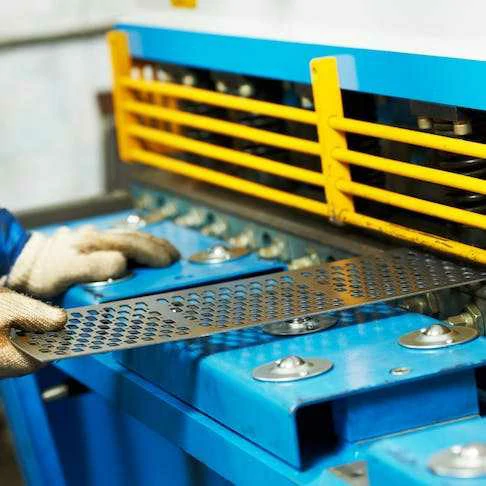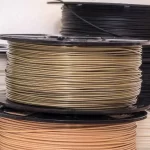How Does the Heat Sink Work?
A heat sink works by increasing the transfer rate of heat from the hot solid medium to a less hot or cool fluid medium. The heat sink achieves this with the use of pins or fins to increase the surface area and sometimes with the aid of a fan to increase the flow rate. The rate at which heat is dissipated is determined by the heat sink size, type, material, and location.
Why Do Different Devices Need Heat Sinks?
Different devices need heat sinks to remove heat from areas that need to stay cool. Heat sinks will absorb and disperse heat from devices to prevent overheating. If an electrical component is not thermally managed then the internal resistance can increase while also leading to degradation of the materials, which in turn affect the performance and reliability.
What Are Heat Sink Types?
There are six heat sink types that can be part of an active or passive system. They are commonly made of either aluminum or copper. The active systems use a fan to induce extra airflow over an area to improve cooling. The passive system relies on increasing the surface area of the component to allow more heat to be dissipated. Listed below are the types of heat sinks:
1. Bonded Heat Sinks
Bonded heat sinks are manufactured by using a conductive epoxy to adhere fins to a base. They can be made of either copper or aluminum or a mixture of both aluminum and copper. Bonded heat sinks are used for applications that require a high fin density. They have a much higher fin density than extruded heat sinks. This increased fin density is best used in an active system with forced airflow. The size of the bonded heat sink is virtually unlimited, and so they are generally used for applications that require very large heat sinks.
2. Skived Heat Sinks
Skived heat sinks feature a series of tightly packed fins on a base that has been manufactured in one piece of metal which results in minimal thermal resistance. They are used in applications with high airflow and minimal space. This is the most cost-effective and reliable way of producing heat sinks. Skived heat sinks are made out of copper or aluminum. The maximum width of a skived heat sink is approximately 400 mm with a height of 200 mm. However, the length of the heat sink is only bound by the length of the copper bar that is used. Skived heat sinks have a dissipation capacity of around 1.5–2 times that of a bonded or soldered heat sink.
3. Extruded Heat Sinks
Extruded heat sinks are the cheapest to manufacture as the process involves extruding one long piece of metal continuously in a cross-section that forms fins and a base together. These heat sinks are used for high-powered semiconductor devices, and in medium to high airflow applications. While copper heat sinks can be extruded, most extruded heat sinks are aluminum. Extruded heat sinks are available up to a width of 400 mm and height of 60 mm. Since they are extruded, the length is unlimited.
4. Forged Heat Sinks
Forged heat sinks are manufactured using compressive force to shape the metal. Forged heat sinks are usually made out of copper as it is more malleable which means it requires less heat to forge. They use either fins or pins to disperse heat. Forged heat sinks have low thermal resistance as there is no medium between the fins/pins and the base. They have a length and width of around 500 mm and a height in the 70 mm range.
5. Stamped Heat Sinks
A stamped heat sink is produced by stamping the fins out of sheet metal. The stamped metal fins are then held together using one or more zipper fins which are perpendicular to the normal fins and interlock to keep the distance. Stamped heat sinks are low performing, and so are used in low-power applications. The set of fins is usually soldered to the base. The size and geometry of the fins can be adjusted by using a different stamp.
6. CNC Machined Heat Sinks
CNC machined heat sinks are best used for one-time production requirements as they are not cost-effective to repeat and there are no extra tooling requirements for a one-off heat sink. Machined heat sinks are therefore used in bespoke, one-off applications. Copper is hard to machine, so machined heat sinks are mostly aluminum. The size of the heat sink will be limited by the capacity of the CNC machine used.
What Are the Benefits of Using Heat Sinks for Different Applications?
The main benefits of using heat sinks for different applications are:
- Increased device efficiency.
- Increased device performance.
- Increased device life span.
- Prevent overheating.
- Keep components within the temperature range they are designed to operate in.
What Are the Challenges in the Determining the Right Heat Sink for Your Applications?
The biggest challenge is that the performance of one heat sink type will vary depending on the environment in which it is used. Factors that will affect the choice of the heat sink are:
- How the airflow interacts with the design.
- How the heat from surrounding components affects the heat sink.
- The space restrictions of the location.
- The budget for a heat sink.
The best way to overcome these challenges is to use thermal-modeling software to predict which heat sink may be right, and then test it in real-world applications.
How Does the Design of the Heat Sink Affect Its Performance?
The main factors affecting heat sink performance are heat sink material, type, and location. If the material used has a high thermal resistance, it will not be an effective heat sink. So choosing a low-resistance material is key. However, the design can also increase thermal resistance if it uses a bonded or soldered joint between the base and the fins. The location and orientation of the heat sink will also affect its performance. Heat sinks should channel airflow parallel to the fins to maximize the surface area between the air and the heat sink.
How Is the Material Composition a Factor for Excellent Heat Dissipation?
The number of free electrons in a material will directly affect its ability to dissipate heat. The more free electrons, the better the heat will disperse, and the reason the two most used heat sink materials are metals. For more information, see our guide on What is Aluminum Alloy?
How Do Heat Sinks Contribute to the Efficiency and Reliability of Electronic Devices?
As the temperature of a device increases, its efficiency and reliability will decrease. This is because as the temperature increases so does the resistance. Therefore, to increase reliability and efficiency, heat sinks are used to moderate the heating effect.
Does a Bigger Heat Sink Mean High Thermal Management?
Yes, a bigger heat sink can result in better thermal management. However, this will only be true if the right heat sink is selected for the application. Often, heat sinks are constrained by the other components around them, so a bigger heat sink is not always possible. In addition, a more efficient design of heat sinks may have better thermal management than one that is simply bigger.
Do Heat Sinks Need Thermal Paste?
Yes, heat sinks do need thermal paste to transfer heat from the component to the heat sink effectively. If thermal paste, or thermal paste substitute, is not used, the thermal resistance between the heat sink and the component is increased. This will negatively affect the heat sink performance.
Do Heat Sinks Perform the Same Principle As Heat Spreaders?
No, heat spreaders do not work on the same principle as heat sinks. Heat sinks are used to transfer heat away from the component into a fluid medium, usually air but sometimes water or oil. Heat spreaders move the heat from the component to a large conductive body which has a similar effect but is not the same. Heat spreaders can be used in sealed units whereas heat sinks often use fans to move airflow over the heat sink. For more information, see our guide on What is a Heat Spreader?
Summary
This article presented heat sinks, explained what they are, how they work, and showed six things to consider when choosing one for your application. To learn more about choosing heat sinks, contact a Xometry representative.
Xometry provides a wide range of manufacturing capabilities, including 3D printing and other value-added services for all of your prototyping and production needs. Visit our website to learn more or to request a free, no-obligation quote.
Disclaimer
The content appearing on this webpage is for informational purposes only. Xometry makes no representation or warranty of any kind, be it expressed or implied, as to the accuracy, completeness, or validity of the information. Any performance parameters, geometric tolerances, specific design features, quality and types of materials, or processes should not be inferred to represent what will be delivered by third-party suppliers or manufacturers through Xometry’s network. Buyers seeking quotes for parts are responsible for defining the specific requirements for those parts. Please refer to our terms and conditions for more information.
.webp)



